September 20, 2015
Martha O'Kennon
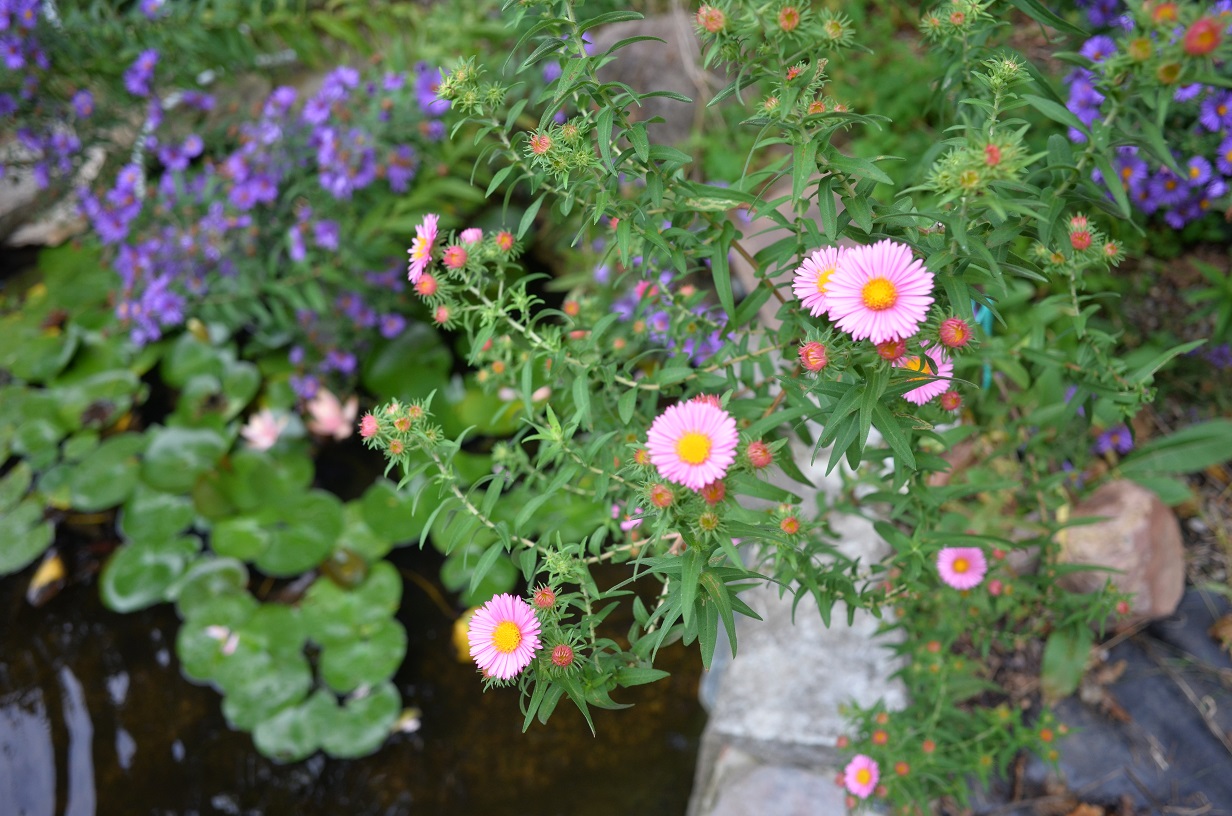
These asters always surprise me. Just as the purple ones behind the pond have reached their peak and are beginning to droop under a hard rain, the light pink ones right next to the purple ones are just opening up.
I don't know if I ever told you where the asters came from. About 15 years ago, my garden was more of a "show" garden than now - I used to buy lots of plants at the greenhouse and plant them where I thought they belonged. One year I had put in a "Purple dome" aster, a low-growing dome of purple and not too far from it a tall hot pink New England aster. As so often happens with greenhouse plants, the two of them made it only a year or two, but each of them had voluminous seeds, which scattered themselves where the wind thought they belonged. The next year I was sorry to see that the two parent plants had disappeared and but encouraged that there were several new asters which, in September, turned out to be a lovely Purplish Pink or maybe Pinkish Purple, all tall. Calling Dr. Mendel! In succeeding years new plants appeared with various shades of purple and purplish pink. After maybe ten years, suddenly we had a light pink one. Now we have several shades of purple, pinkish purple, mauve, light pink, and one magenta one that I dug up from a friend's yard. All exactly where they must belong as they have prospered just where they sprouted. It is fascinating to consider why the pink seemed to disappear for so long. But who ever said gardening was an exact science?
Remember that there is information in the name of the file for each image. You can see it by mousing over the image - look at the lower left of the screen.
I would try clicking on the image. If the little "+" sign appears, it means you can enlarge again. While it is in "+" mode, click on something you want to see more clearly and it will zoom to that section. Then the info is displayed in the address line above. If the image has been cropped
so that clicking on it doesn't result in a larger picture, you can always hit control plus to increase the size of the image.
Some of you will be sad and others probably very happy that the caterpillars are all pupae now and no fun at all. I plan to put them and good quantities of leaves in my porch windows, outside the glass and inside the screen. That way they will get the natural temperature and humidity they need in order to complete their maturation in good shape. That's it. We'll see what transpires next July!
This last week the insects and spiders have been a little less in evidence, except for the ones that visit the asters and goldenrod, where I pass a good bit of time watching them. The goldenrod has been a great stopping-off place for wasps and a few small bees, while the asters cater to the honeybees, bumblebees, and a few butterflies. I haven't been very successful yet in being able to spot the various wasps in their various patterns, but I'm getting better, certainly better than last year. The nfirst one, the male common aerial yellowjacket, is getting easier to apot on the move. But actually if you observe the two vertical stripes on the thorax, they are usually the earmarks of a different species, but apparently some of the common aerial yellowjacket males have them. Here is another one without the vertical stripes. The third one is almost surely a Vespula flavopilosa worker. We know it is one of the females because it has only six abdominal segments. You can but imagine how tedious it is if you want to get good at identifying these little yellow and black wasps.



Sometimes the wasp will be staring you in the face and still let you get a quick picture. Here's one that I have just sent off to be ID'ed. It almost looked like one in the big book by M. Buck, but I wanted someone to hold my hand and say Yes or No. I think this one is the same but it is also the cutest wasp face I've even seen as it peers around a leaf at me.
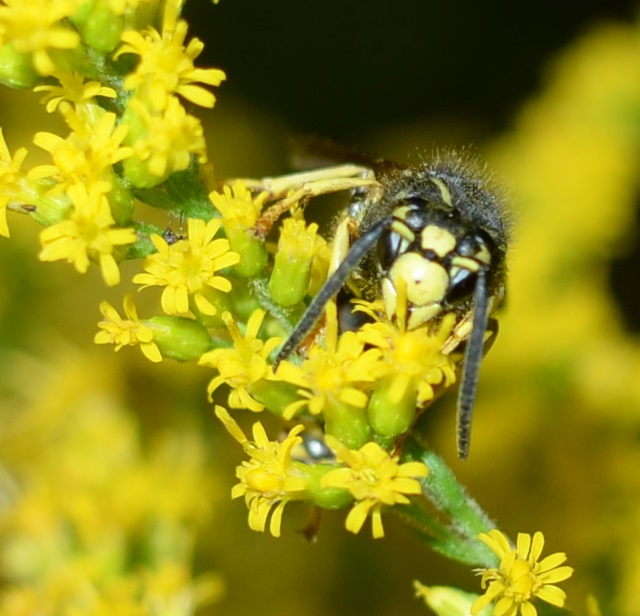
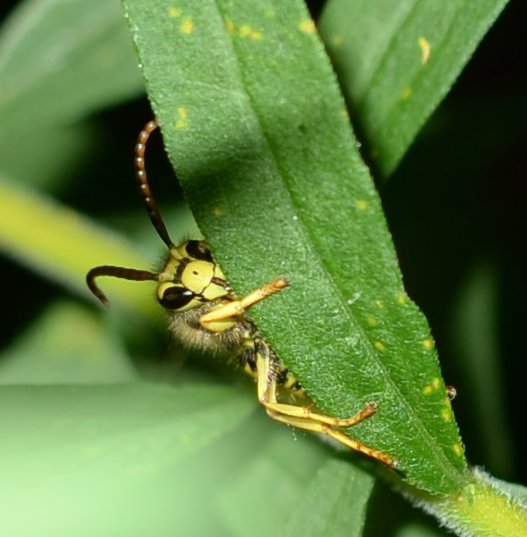
The next two are of a potter wasp I believe (The ones that make clay nests). There are a whole group of wasps with that happy-face on the thorax and the very bright bands about the abdomen. They are most likely of the genus Ancistrocerus. And here is another pair of pictures of yet another wasp.
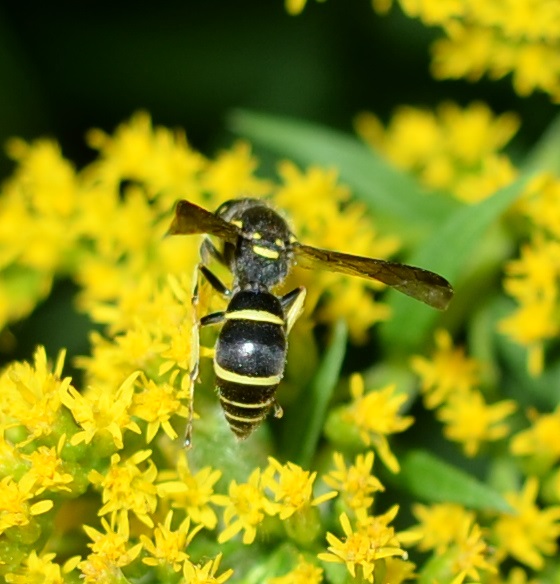
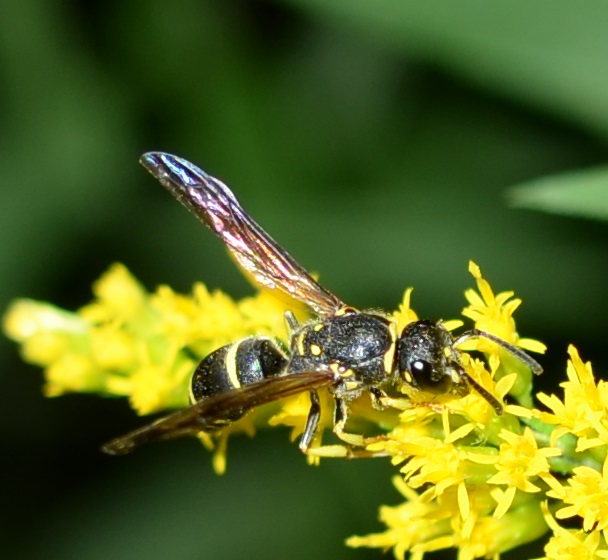
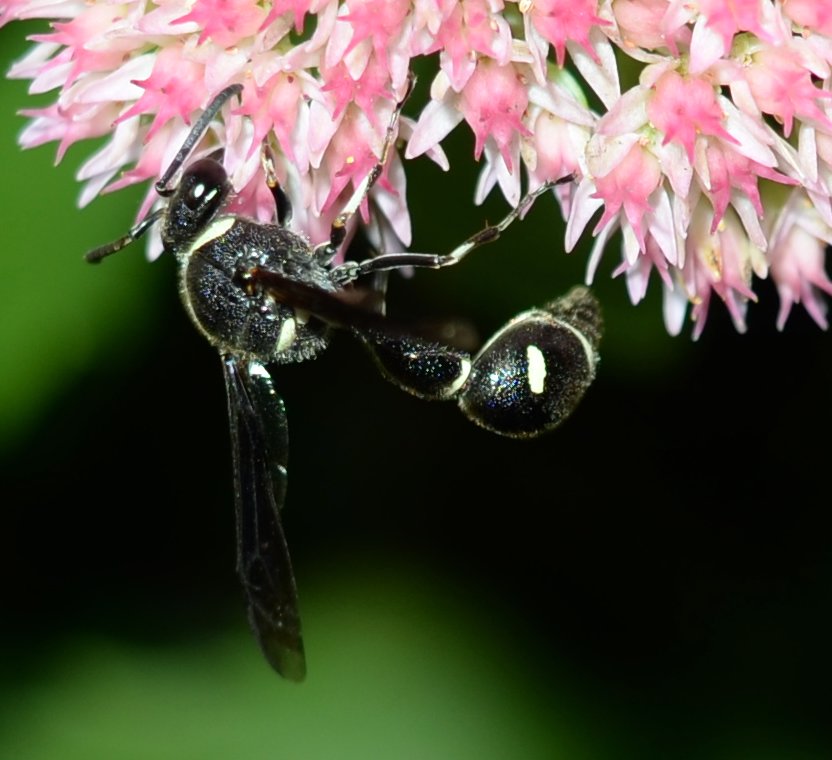
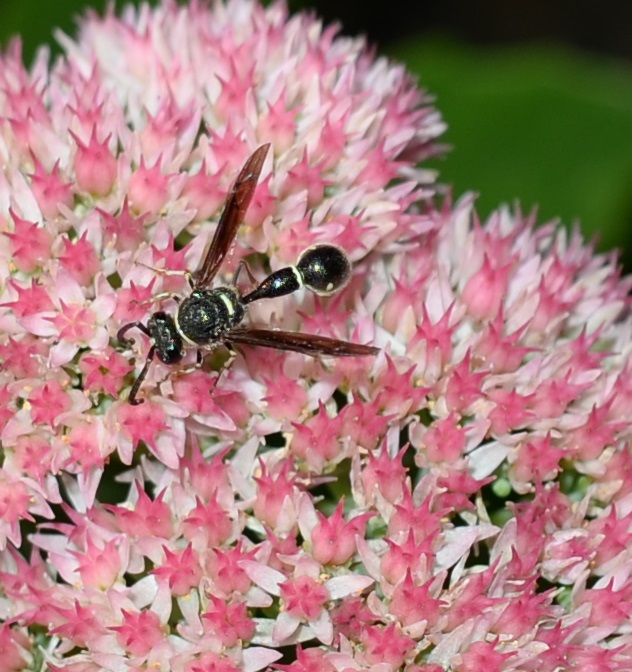
Oh! I almost missed these tiny bee/wasps that gather on the goldenrod - they are less than 3 mm long, but make up for their size by their numbers!
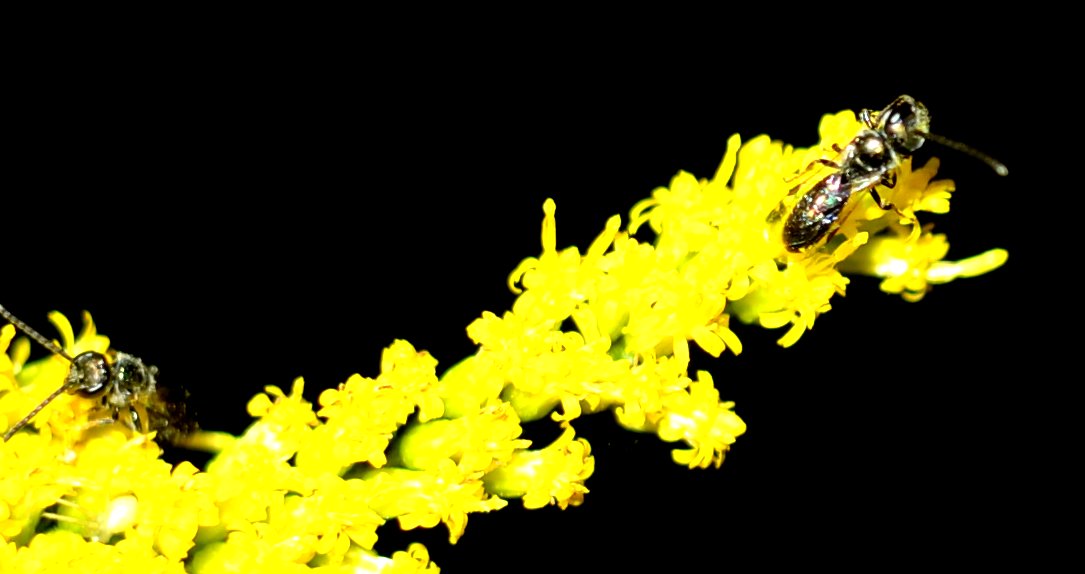
Let's turn our attention to one little creature that I eagerly hope to see each year on the goldenrod - a very small ichneumon wasp with a red abdomen and a medium-length ovipositor. First here's a little male, then a head-in-the-flowers view of the female, the seeming favorite pose of this busy sipper And finally a couple of nearly resting pictures of the whole animal, with her bright red abdomen covered this time by her tightly closed wings.
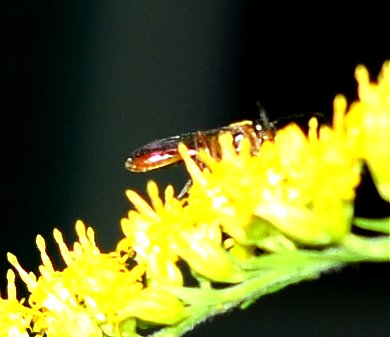
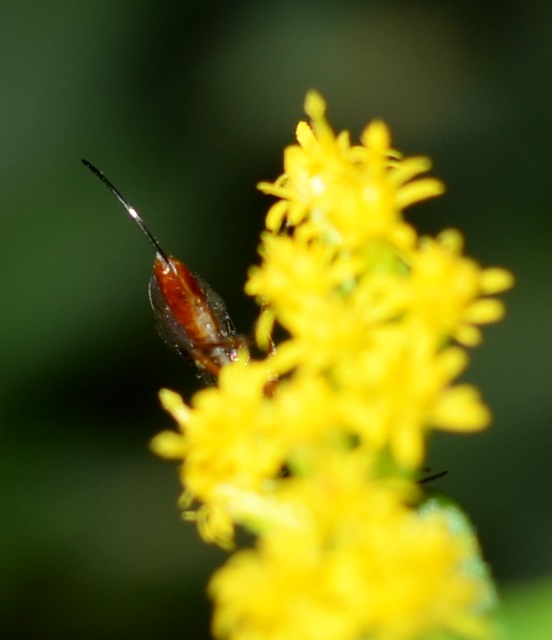
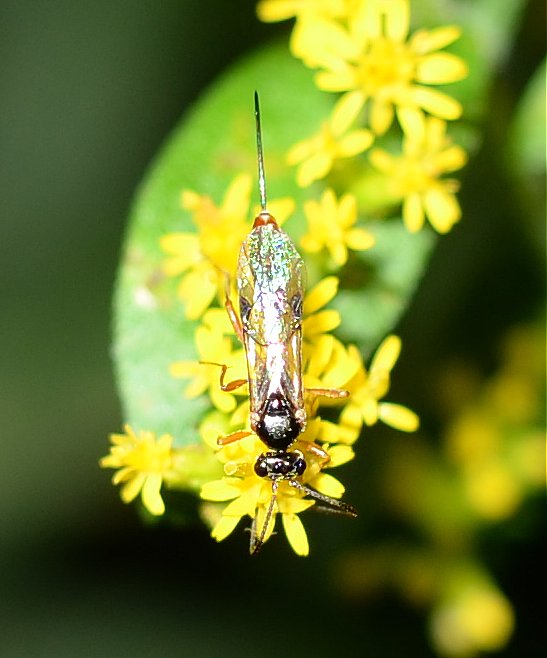 "
"
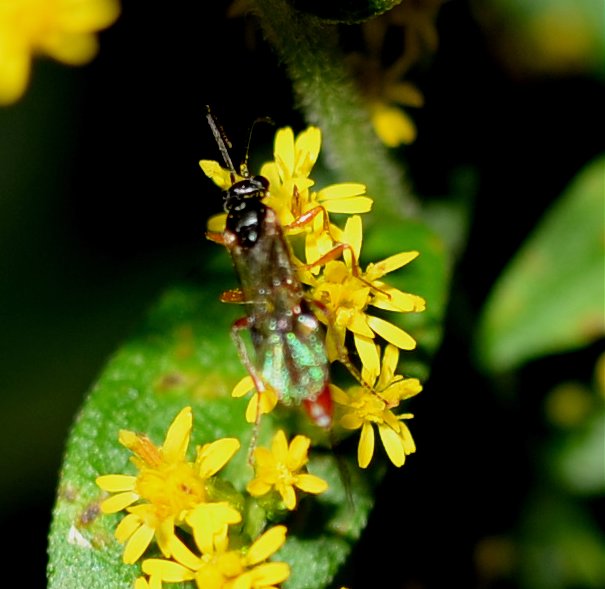
Usually I give you a flower break between the wasps and the bees. But remember they all belong to a huge family that includes bees, wasps, ants, and parasitic wasps. Yesterday a new (to me) kind of ant appeared - a lovely russet red - and many of them with wings. In fact, here is a picture of one removing its wings, and then with the discarded wings in the background. I wonder if some of these are queens. Remember we had a big queen-to-be ant earlier this spring. The person from Bugguide.net who Id'd her then said she had just shed her wings and was about to go underground for the rest of her life. These ants must have spent quite a long time underground, since their quick appearance yesterday was such a surprise. I suppose if this is indeed THAT species, it may be spring again before we spy them again.




If the goldenrod has been like a wasp magnet, the asters are a veritable bee spa. The whole time the sun is on the asters, so are the bees. They can't stay still. It's as if they can't believe the nectar will still be there if they take their time at one flower. They sip from one and move on to another much faster than they could possibly exhaust the supply of nectar. The smaller they are, the more nervous they seem. There seem to be many kinds of honeybees: some golden, almost blonde; some quite brown, some even with a long brown swath near the tail. Busy little things, and Yeats was spot on when he called it the "bee-loud glade".
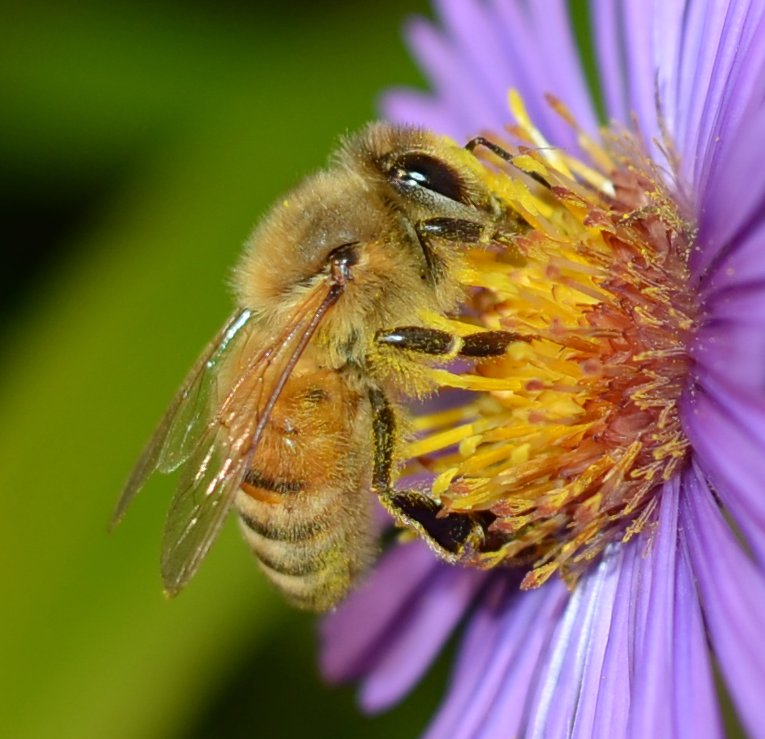

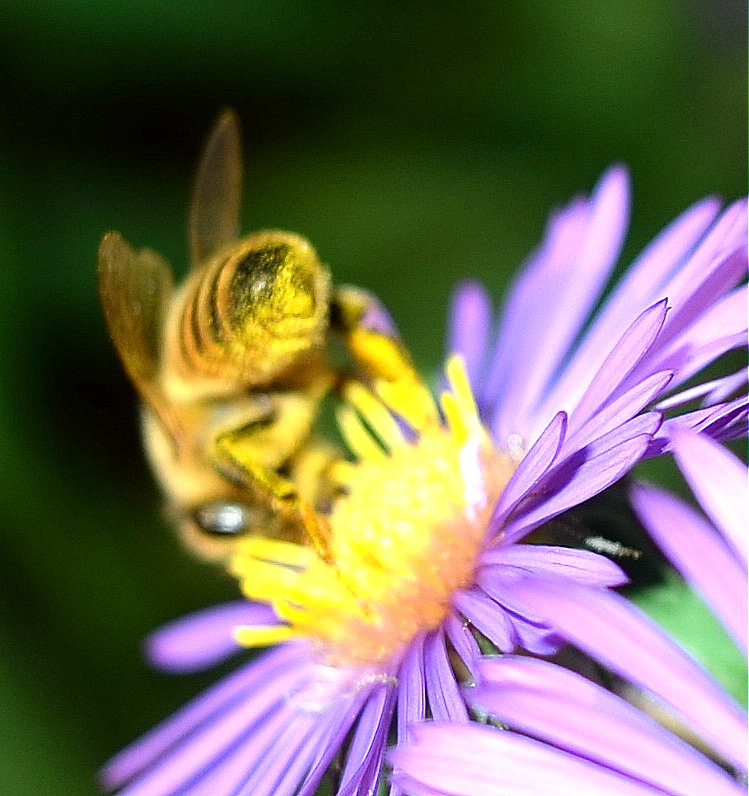
Usually I try to blend in some flower pictures to give your eyes some delight and rest. But now it seems that every picture I take of one of these tiny visitors, it is sitting on a beautiful background. This is especially true of the bees, who love the aster flowers as much as the wasps love the goldenrod. The metallic bees are a challenge to shoot since that means I have to turn off the flash and that means getting the cheap quick shutter speed. Otherwise their iridescence is changed, including the color. So I have to take many many pictures before I get a pretty good one. Here goes! Here is a male green sweat bee sheltered from last night's rain - remember they have the stripey abdomens, while the females are all brilliant green, like this next one. The last image used flash and the true green turned to golden, accentuated by the pollen accumulated in this nectar quest.
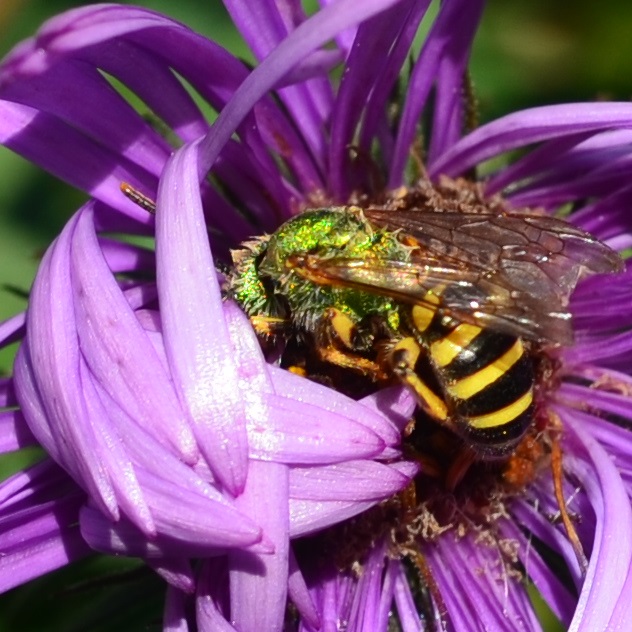
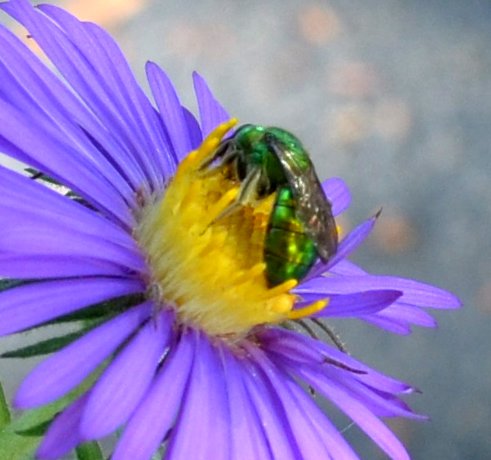
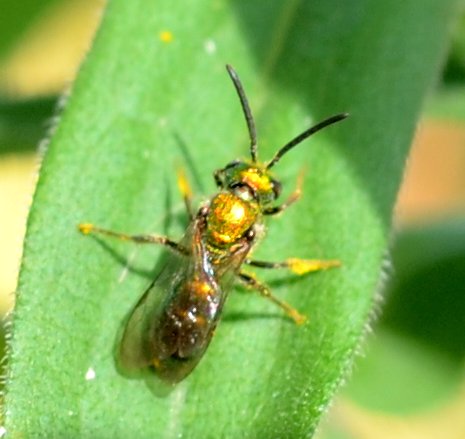

Here is a non-honey striped bee which is rather common these days. There is a tiny version of this bee, with black and white stripes. This one likes aster, goldenrod and especially the Autumn Joy sedum. I believe that the third bee is different from the others, but I could be wrong. The fourth is probably the common eastern bumblebee. I'm still learning about them, and think now that what I've been calling a little bumblebee is really one or the other of the sexes of that same big bumblebee we know.
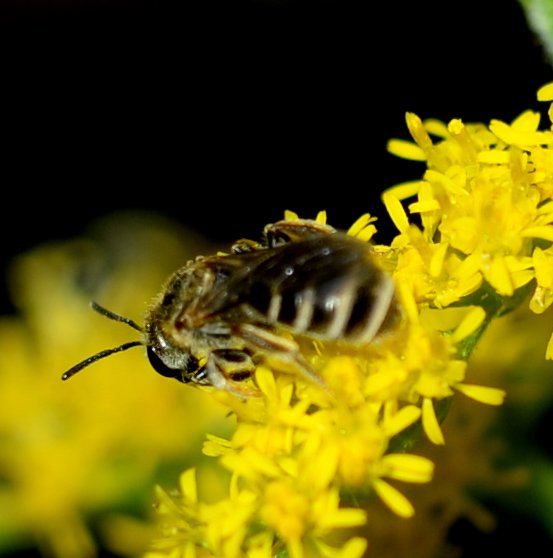
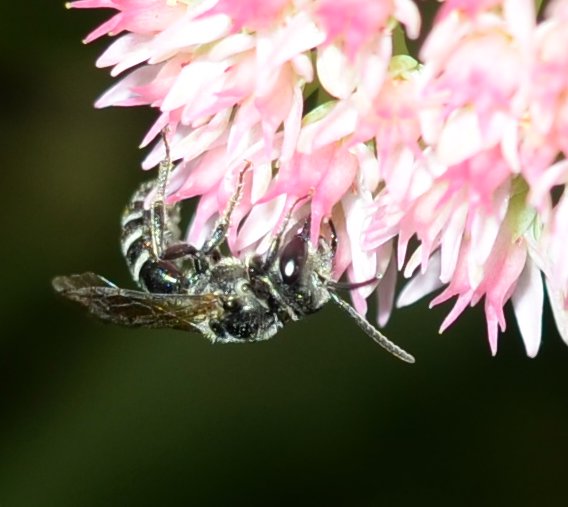
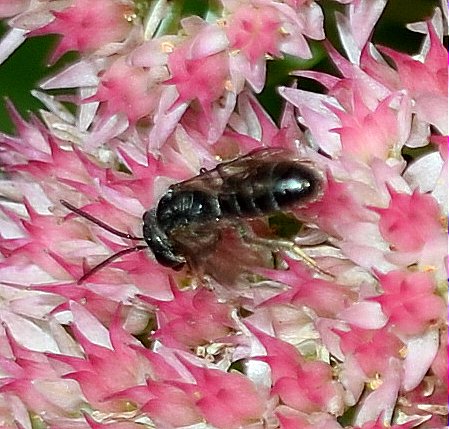
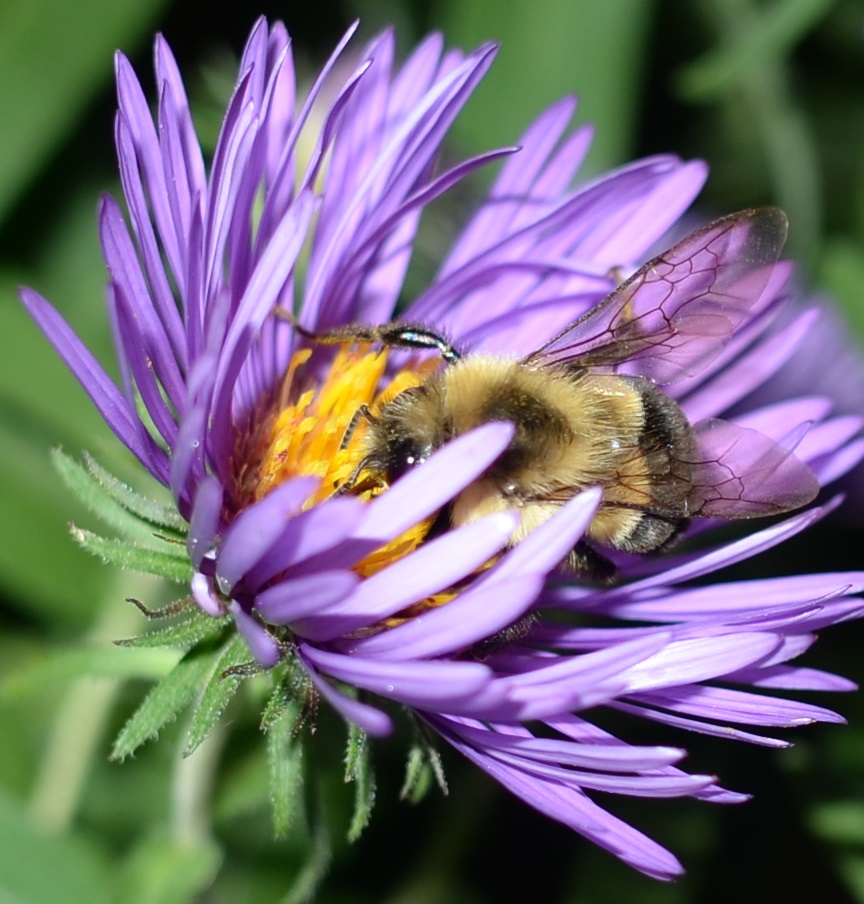
Were there any new beetles or bugs in this land of bees and wasps? There are a couple that come out especially in the fall, which I hate to admit may be in its initial throes. One is the spotted cucumber beetle, which likes goldenrod nectar - it's the larva that gets into your cucumbers! The Latin name is interesting - undecimpunctata, literally eleven-spotted. That's because the middle two spots in the top row come together. The second one is the three-lined potato beetle. It was a real pest to rival the four-lined plant bugs that emerged from those red-and-black mirids. It was especially fond of my Chinese lantern plant, which didn't have the strength to grow any red-orange lanter-shaped fruits! Maybe next year I will protect just those plants.
 9 14 153.jpg)

There WERE bugs though. Of course we had the candy-striped leafhopper. I had mentioned the possible bioluminescence of that species to a group on Researchgate.net. People brought in several videos which made it look as though a burst of white light emanated from the tushies of especially the females. But finally one person, Debbi Brusco, sent in a video showing two (female though that apparently doesn't matter) candy-stripers peeing good-sized bubbles of liquid and sometimes the sun would catch the liquid just right and send up a glint that looked exactly like the "bioluminescence" some people had thought they saw. Unfortunately you may have to wait for a commercial to finish first. But be brave! Seeing is believing, so I now officially pronounce that bioluminescence meme an urban(?) legend! Until other evidence contradicts this one of course. Another person who actually REARS leafhoppers, Jernej Polajnar, wrote in to say that these leafhoppers are "xylem feeders who must ingest a lot of water to gather the required nutrients (sap is quite imbalanced in this regard)". In other words, they don't get much nutrition from the plant matter they eat so they have to eat a lot and excrete a lot of liquid. I was of course so happy to meet another leafhopper lover! So this week we still had a declining number of these candystripers, an unfamiliar leafhopper with a conical head (!), a couple of the brown buffalo treehoppers, and one of those spittlebugs,who seem less and less likely to be alder spittlebugs.
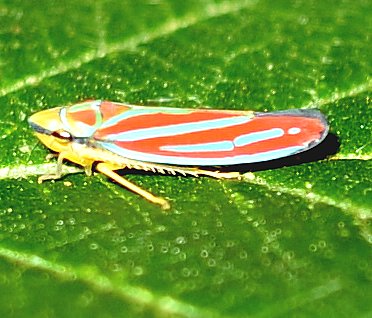
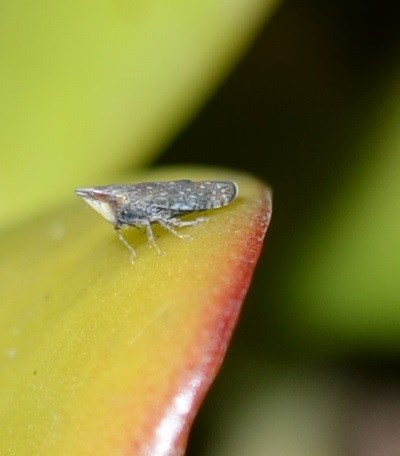

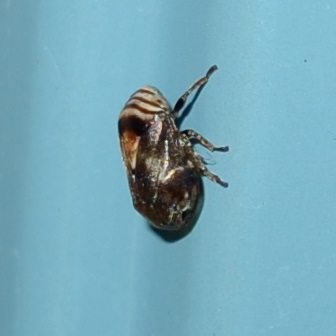
We also had a few more bugs: that striped nymph of the green stink bug, another brown stink bug, and that Lygus plant bug that seems to be very common in the fall.
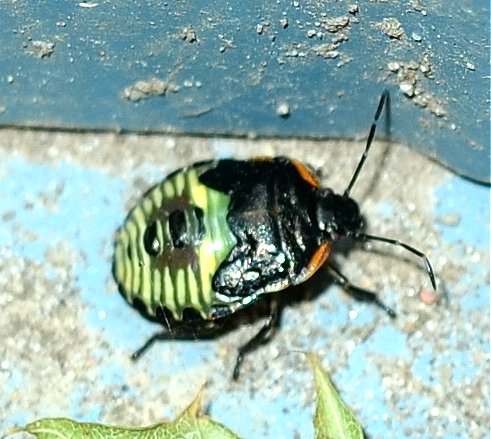
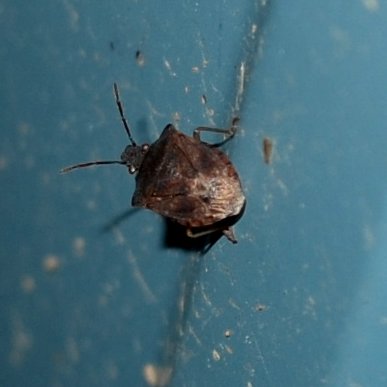
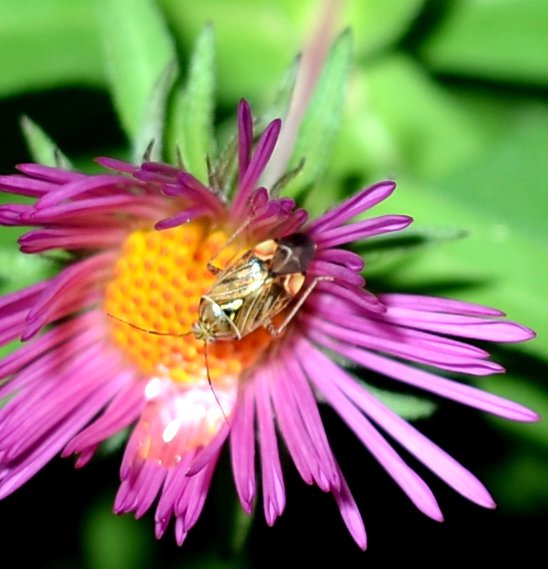
Of course, I couldn't stay away from some of the milkweed planted beside the Music department, and so found that a horde of nymphs of the Large milkweed bug had morphed into a herd of adults. Here is a horde and a herd respectively, both existing contemporaneously on neighboring pods.
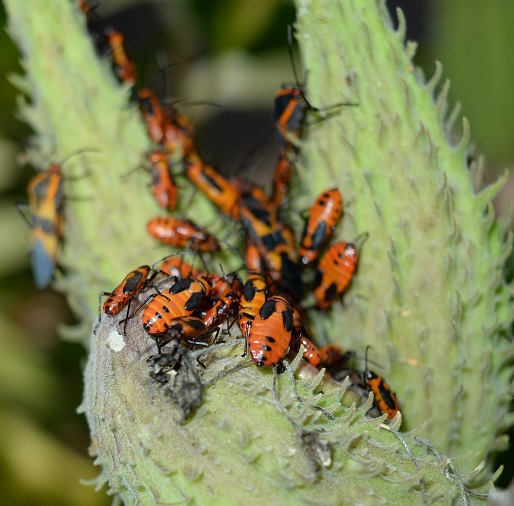

Butterflies? I saw many cabbage whites, another monarch (another female), and this Great Spangled Fritillary. Dragonflies? Just some more of those Autumn Meadowhawks that I can't get enough of. They pose in such interesting positions. Here's one of the yellow-orange females, and one of the bright red males.
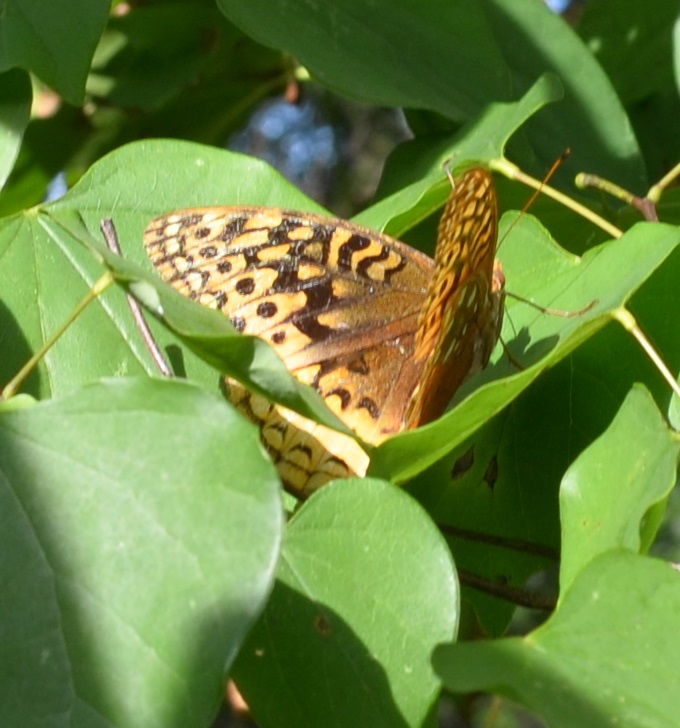

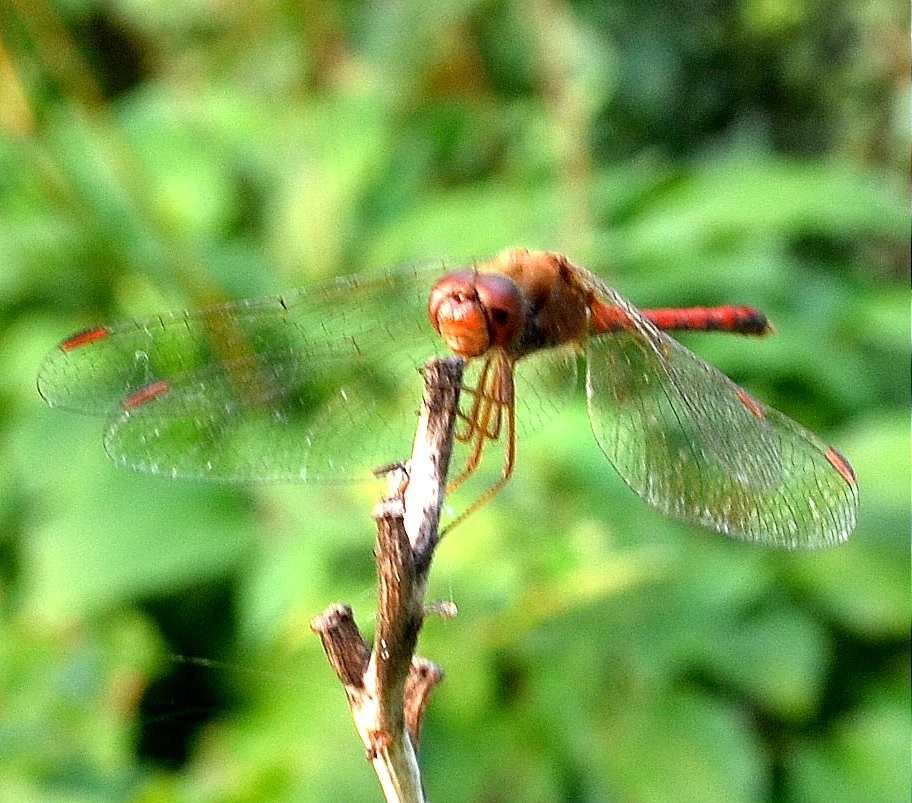
Flies? We have some wonderful flies as well as the housefly-relatives. But let's turn first to those fascinating hoverflies. Here's the tiny one we've had all along, the larger one that has been seen more often these past few weeks, with its bright broad stripes (we now know how it loves the phlox), ending with one that I thought was a small bee till I gave it a good look, seen twice here, once with wings folded and once showing the abdomen, which seems to be gold and black striped.
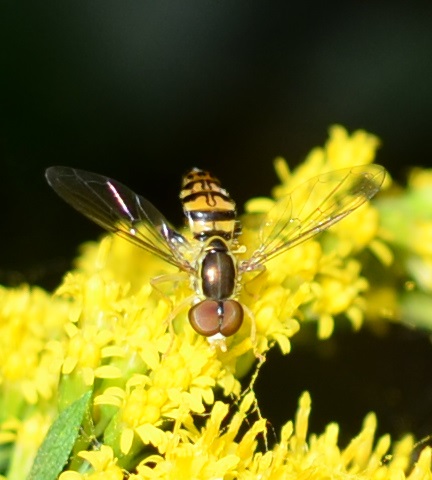
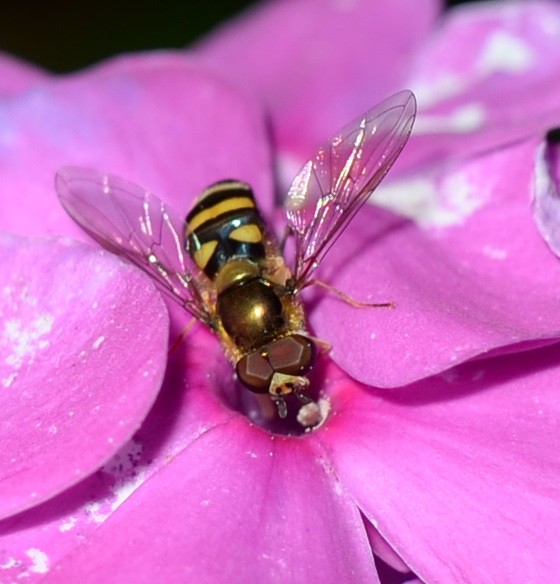
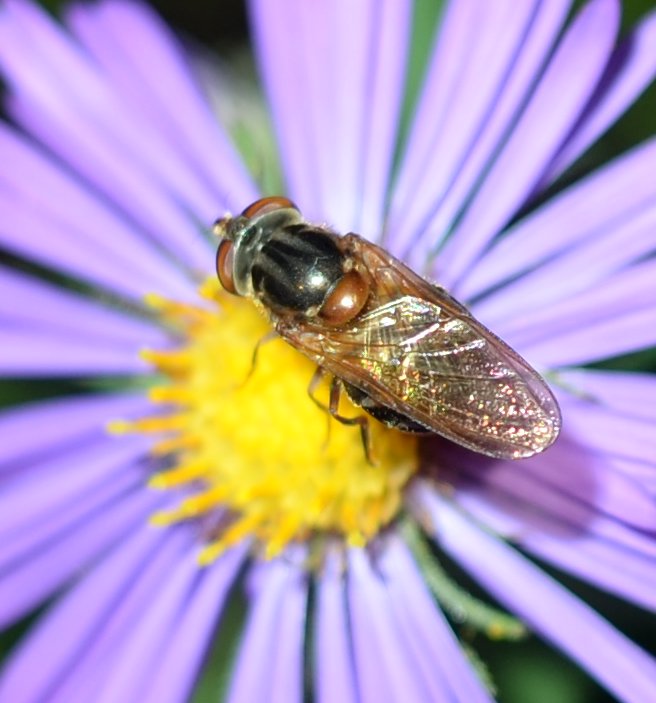
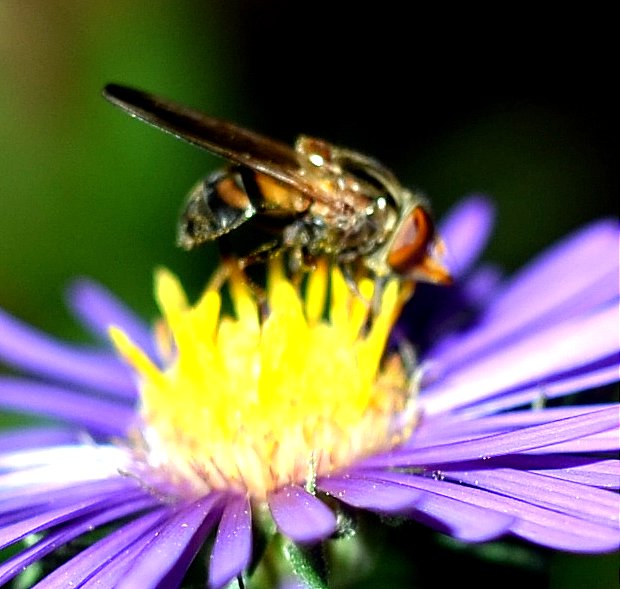
We have lately had a plethora of tiny flies that look like moths, hence the name moth fly. This other mystery fly was sharing the Autumn Joy with some other bees and wasps. We had scorpion flies again, and this strange-looking little crane fly
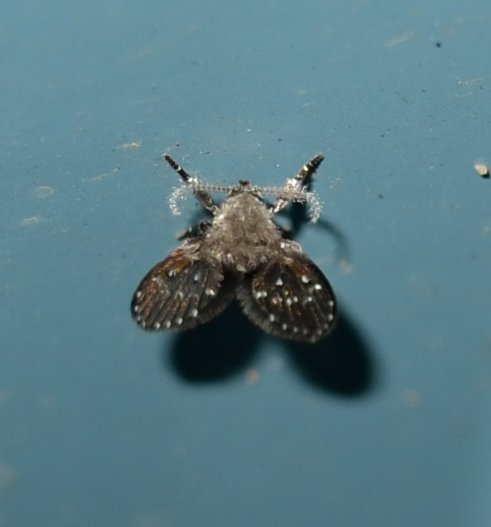
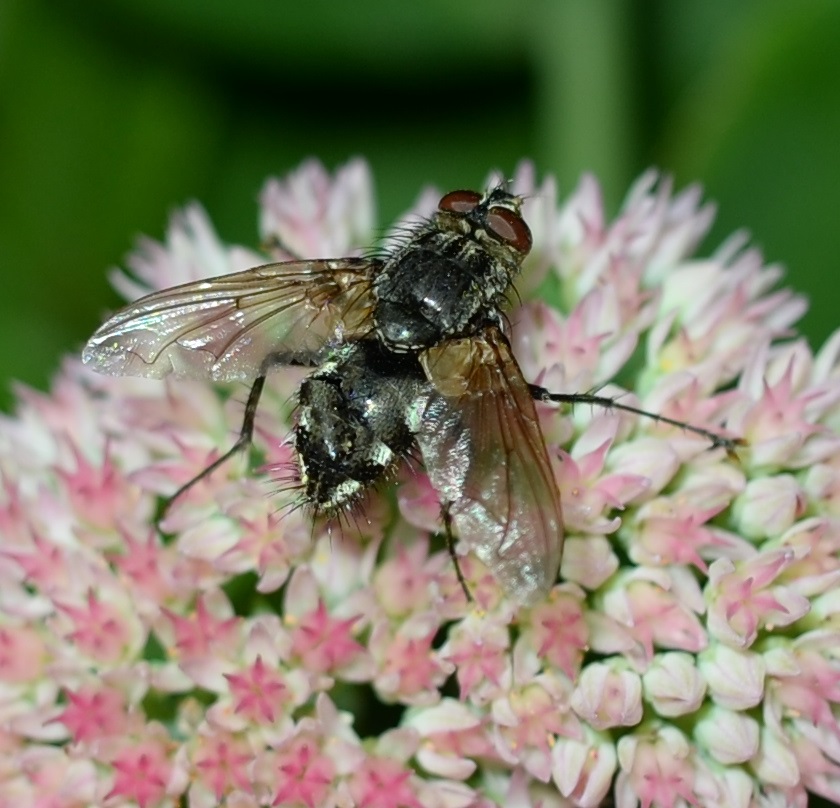
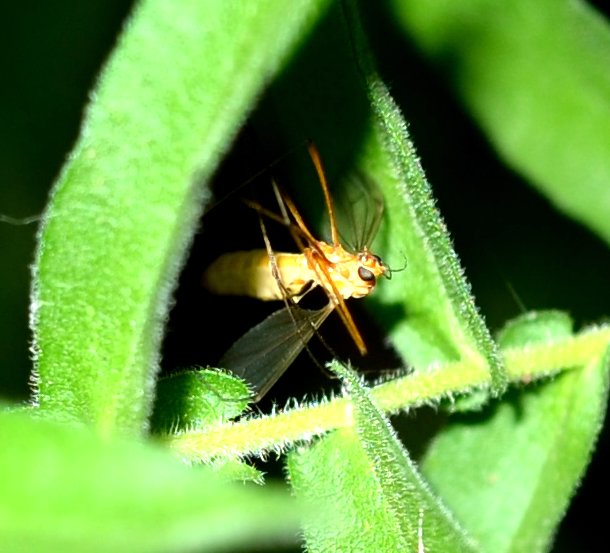
It was a more interesting week for the spiders. There are egg sacs under the eaves of the front porch, and one or two on the shop wall, where there are also a few little spiders. They mostly look like the common house spiders, here a female and here a male with its long red legs. Then a large grass spider, and a Xysticus spider (may be a crab spider relative).

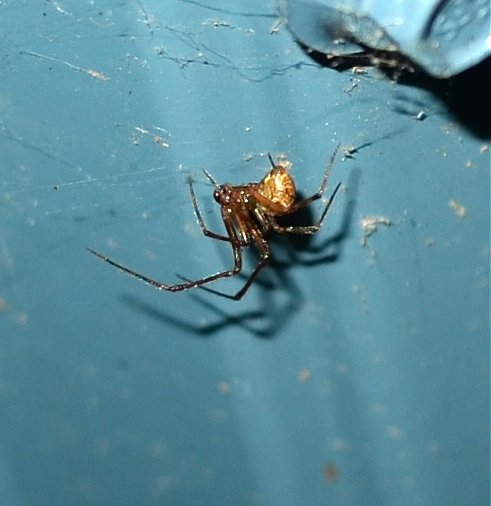
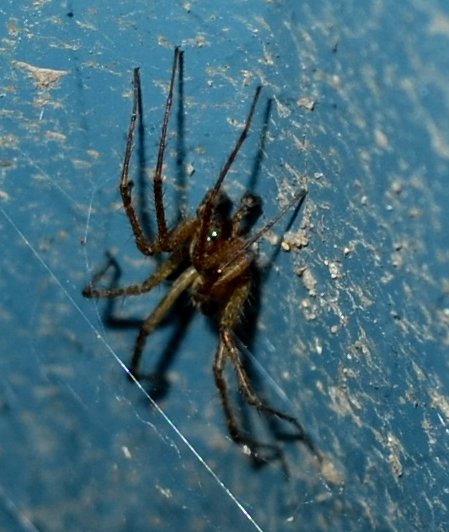
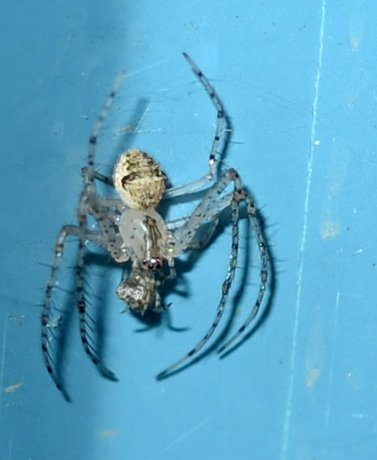
I found this little jumper on the house outside wall a couple of days in a row. It has the typical "headlight" eyes and pink moustache. Here it is walking away. But you know how I love the little crab spiders. They are a little cagey to catch face-on - their habit is to walk behind a convenient leaf or stem. But they are beautiful - what miniaturization. Each little bit perfect for a crab spider. Here is one in the goldenrod, looks like a northen crab spider to me, where they lurk to pick off the many visitors. And this picture is ambiguous to me. Is it a crab spider eating a wasp? or is it one of those spider-eating wasps? Too close to tell.
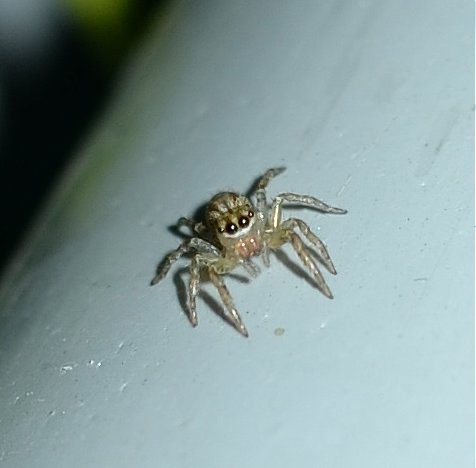
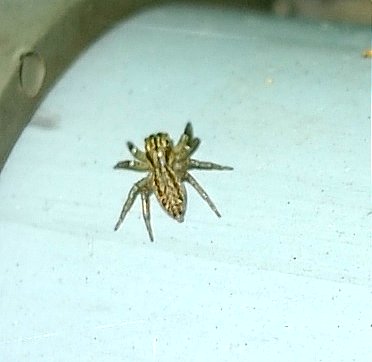
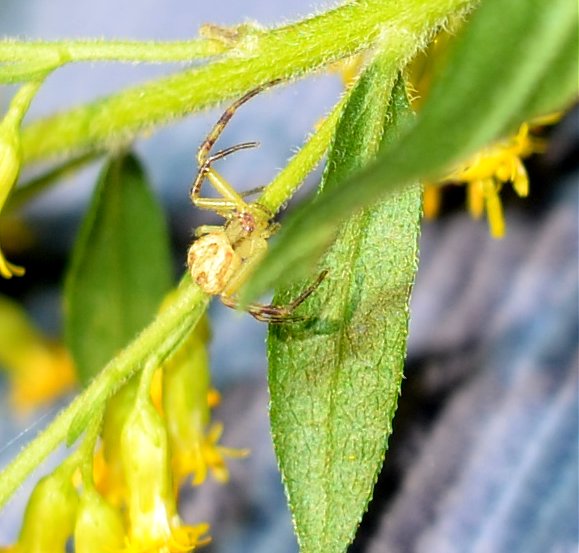

Look how everything goes together! There are enough spiders to keep the carnivorous wasps happy, and there are enough delicious-looking things to keep the spiders happy. Earlier we saw the sawflies that eat poison ivy at some time of their life. I remember immediately feeling less guilty about not pulling up all the
poison ivy. Now I know you don't see the beautiful sawflies unless you are willing to let some poison ivy alone. It's the fascinating web of life. I hope the planet keeps spinning for a good long time and nature keeps spinning out its beautiful creatures and that we can keep on co-existing with them.
Back to September 13
On to September 27
Back to 2015 menu
Back to main menu
copyright Martha O'Kennon 2015














 "
"
















 9 14 153.jpg)



























